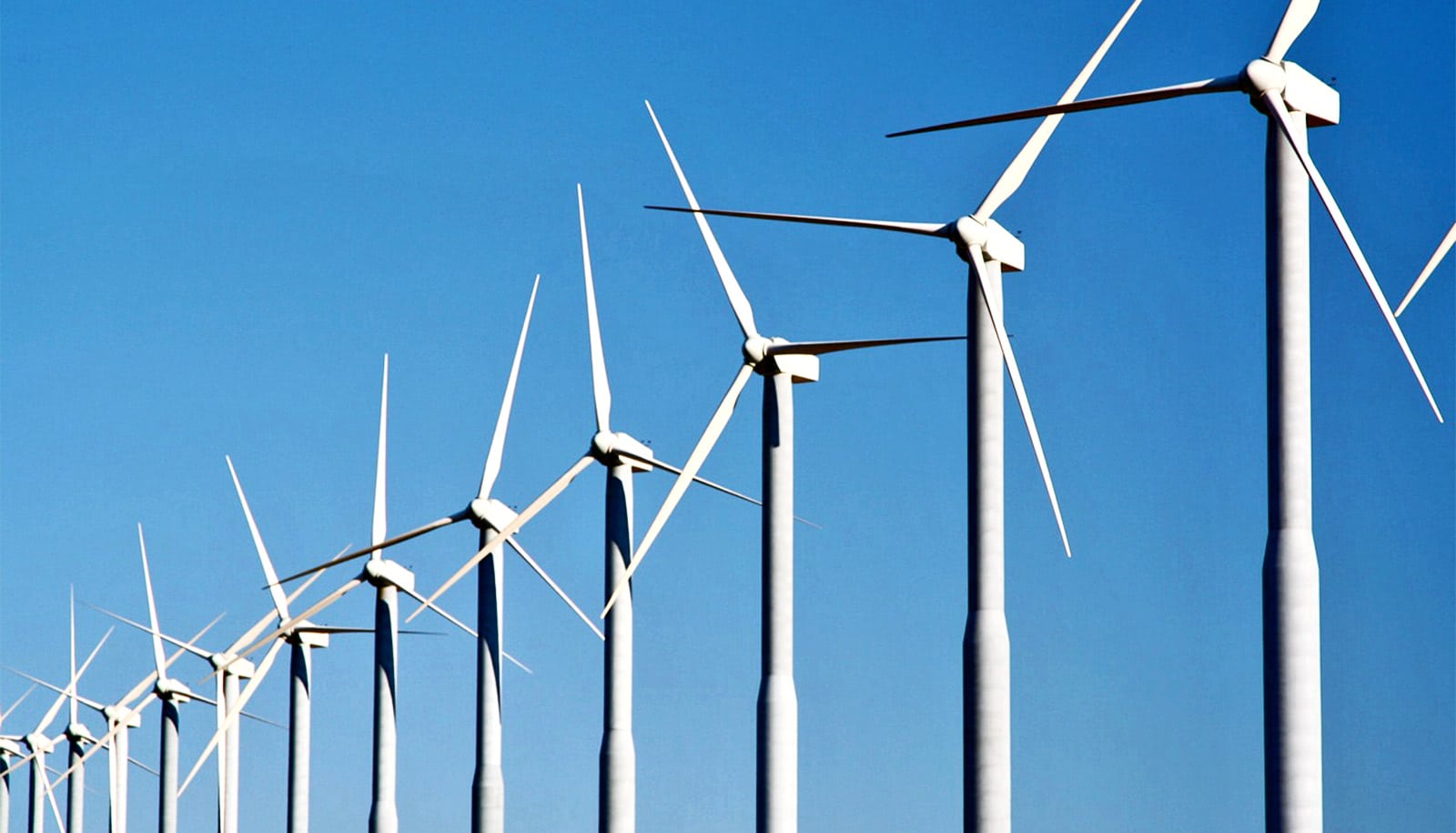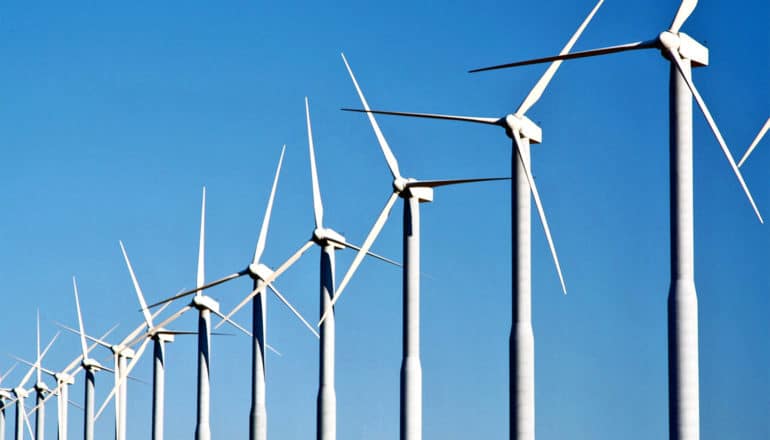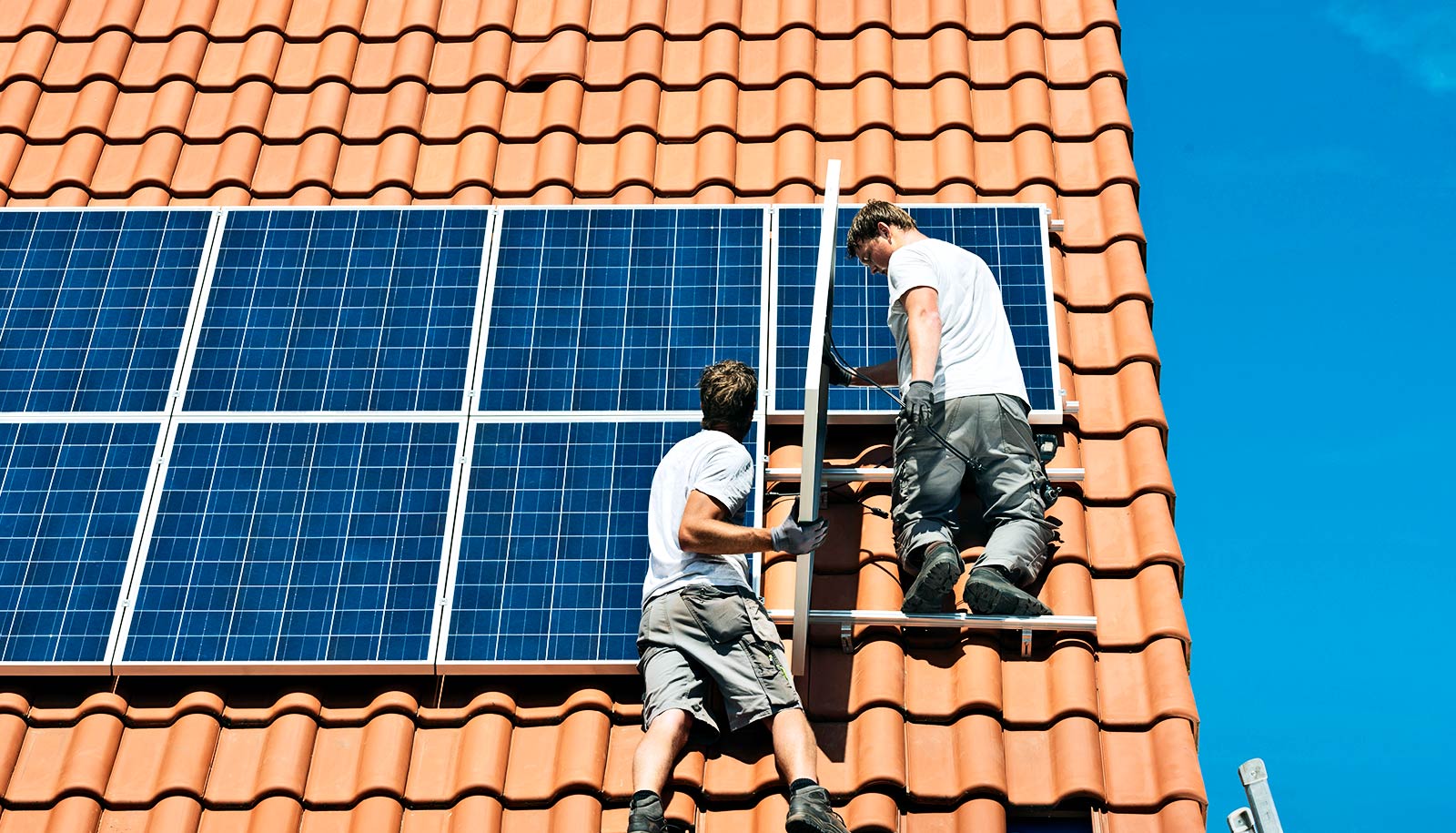
(Credit: Mike Lemmon/Flickr )
Better renewable energy storage could cut emissions
With more investment, better energy storage for wind and solar power could prevent extra energy from being wasted and cut greenhouse gas emissions.

With proper policy support, investment in batteries and other energy storage technologies can make money and cut greenhouse gas emissions, researchers report.
Drive through nearly any corner of America long enough and giant solar farms or rows of wind turbines come into view, all with the goal of increasing the country’s renewable energy use and reducing greenhouse gas emissions.
But what some may not realize is at times these renewable energy sources can produce more power than what is needed, leaving some solar or wind energy to, in a sense, go to waste. This oversupply condition is a lost opportunity for these clean energy resources to displace pollution from fossil fuel-powered plants.
Investment could reduce the emissions of greenhouse gases by up to 90%, according to one scenario researchers examined of power systems in California and Texas. It could also increase the use of solar and wind energy at a time when climate change takes on greater urgency.
“The cost of energy storage is very important,” says study coauthor Maryam Arbabzadeh, a postdoctoral fellow at the School for Environment and Sustainability at the University of Michigan. “But there are some incentives we could use to make it attractive economically, one being an emissions tax.”
“Electricity generation accounts for 28% of the greenhouse gas emissions in the United States, and given the urgency of climate change it is critical to accelerate the deployment of renewable sources such as wind and solar,” says coauthor Gregory Keoleian, director of the Center for Sustainable Systems and a professor of environment and sustainability and civil and environmental engineering.
“This research clearly demonstrates how energy storage technologies can play an important role in reducing renewable curtailment and greenhouse gas emissions from fossil fuel power plants.”
The researchers created complex models analyzing nine different energy storage technologies. They looked at the environmental effects of renewable curtailment, which is the amount of renewable energy generated but unable to be delivered to meet demand for a variety of reasons.
They also modeled what would happen if each state added up to 20 gigawatts of wind and 40 gigawatts of solar capacity, and how a carbon dioxide tax of up to $200 per ton would economically affect all of this.
What they found was striking.
Adding 60 gigawatts of renewable energy to California could achieve a 72% carbon dioxide reduction. Then, by adding some energy storage technologies on top of that in California could allow a 90% carbon dioxide reduction. In Texas, energy storage could allow a 57% emissions reduction.
But for all of this to happen, utility companies would need a reason to invest in energy storage systems, which require large amounts of capital investment. That is where the use of a carbon tax could be helpful, Arbabzadeh says.
All nine of the energy storage technologies studied, including high-tech batteries, require a significant capital investment and all had different pros and cons. Also adding to the complexity of the research is the different types of generation mix in Texas and California.
Texas uses some coal and natural gas-fired units. California uses more inflexible resources, like nuclear, geothermal, biomass, and hydroelectric energy units, which make its renewable curtailment rates much higher than Texas.
The study appears in Nature Communications.
Additional researchers from Ohio State University and North Carolina State University contributed to the work. The National Science Foundation, the Dow Sustainability Fellows Program, and the Rackham Predoctoral Fellowship Program funded the study.
Source: University of Michigan
The post Better renewable energy storage could cut emissions appeared first on Futurity.
Share this article:
This article uses material from the Futurity article, and is licenced under a CC BY-SA 4.0 International License. Images, videos and audio are available under their respective licenses.


